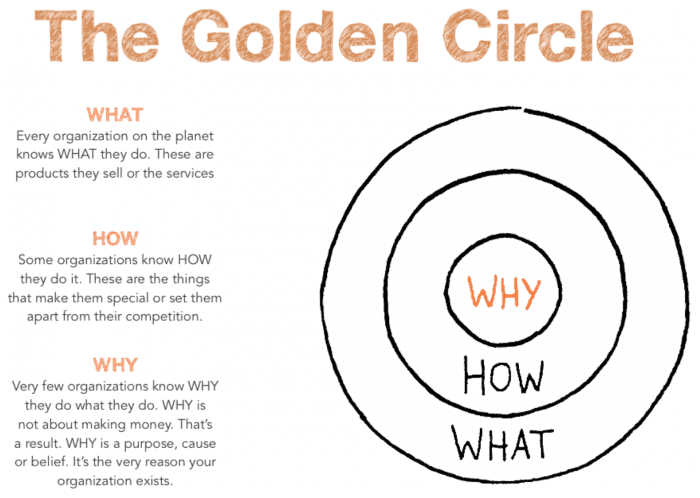Have you ever wondered what a marketing model is? A marketing model is an analysis tool businesses use to determine their earning potential by reviewing their overall strategies.
There are numerous marketing models that can help to this end. We’ll review them in this complete guide.
1. PESTLE Analysis: Political, Economic, Socio-Cultural, Technological, Legal, & Environmental Factors

The PESTLE analysis helps businesses understand the external factors that can influence their success and growth. As a result, it encourages strategic planning related to timing product launches, making big business moves, and so on.
These factors narrate a business’s environment and include its Political, Economic, Socio-cultural, Technological, Legal, and Environmental conditions.
Harvard Business School professor Francis J. Aguilar is often credited as the creator of this marketing model — having talked about it in his book, Scanning the Business Environment.
Aguilar, however, released it as the ETPS model that covered the broad environmental factors: Economic, Technical, Political, and Social.
The acronym and model changed over time, though. It went from ETPS to STEP (Strategic Trend Evaluation Process) to STEPE (Social, Technical, Economic, Political, and Ecological). Until finally, it morphed into PESTLE.
2. Ansoff Matrix Analysis: Existing Markets vs. New Markets & Existing Products vs. New Products
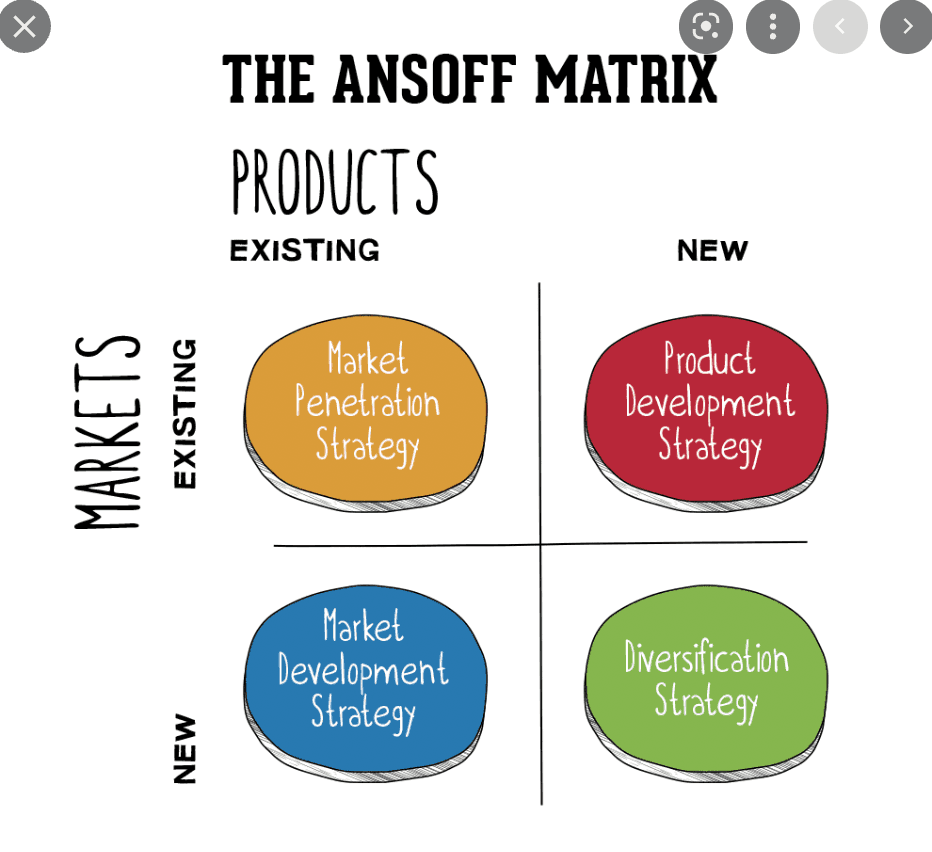
Named after its Russian-American creator, Igor Ansoff, the Ansoff Model is a grid format helping marketers and executives determine how best to grow in a competitive market.
To this end, it lays out four growth strategies in a grid:
- Market penetration involves growth in a market where a business’s products/services already exist using strategies like increasing promotion and decreasing pricing.
- Market development is when a business uses its current products/services to grow into a new market, i.e., marketing to foreign markets.
- Product development strategy is when a business creates new products/services for the existing market.
- Diversification involves a business growing into a new market with a new offering. Diversification is the riskiest of the four strategies.
Because the Ansoff matrix helps businesses evaluate opportunities for expansion and revenue growth, it also goes by the name of Product/Market Expansion Grid.
3. Porter’s 5 Forces Framework: Entrant Threats, Substitute Threats, Buyer Power, Supplier Power, & Competitive Rivalry
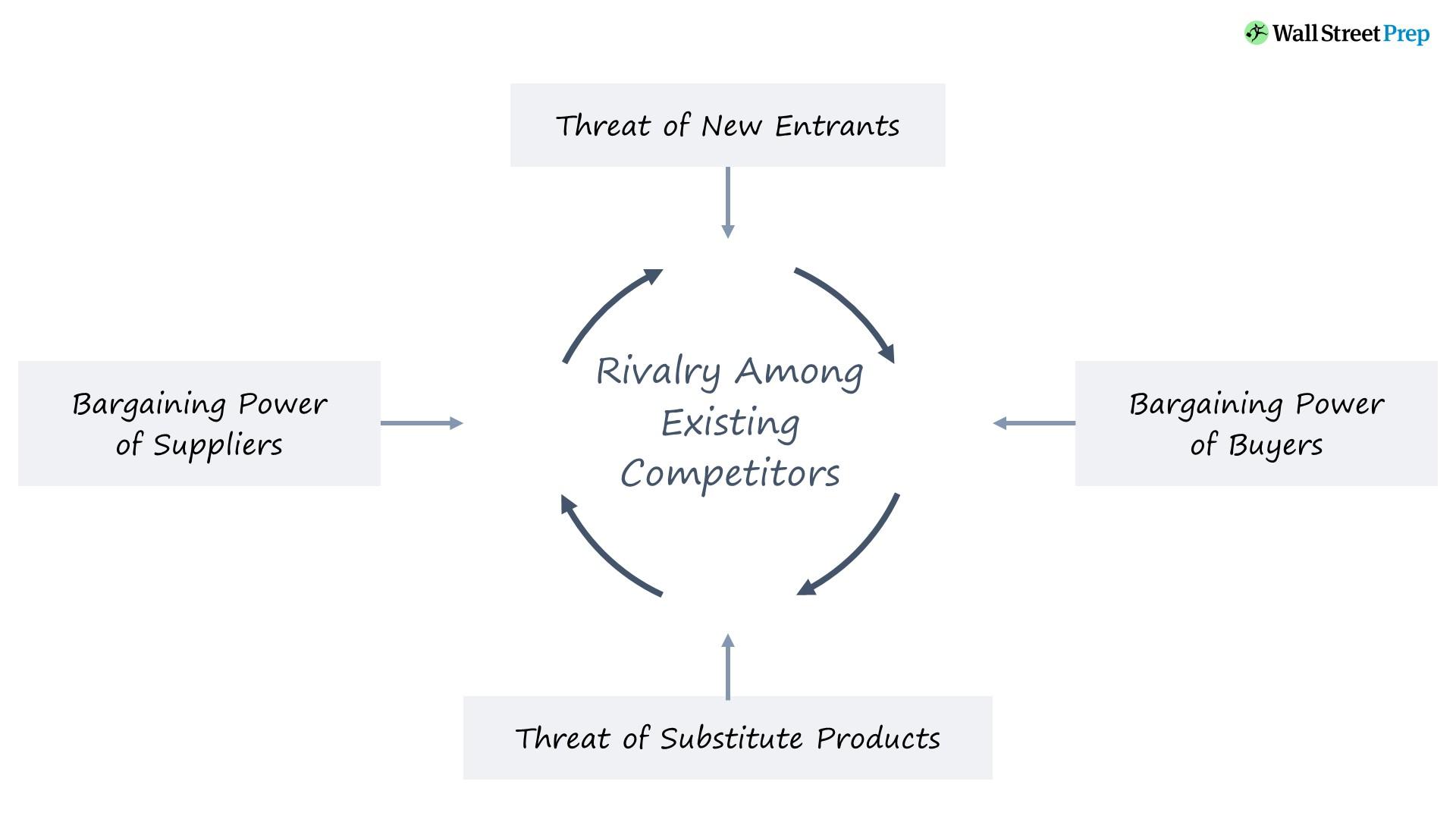
Michael Porter’s 5 Forces framework is an effective tool for helping businesses analyze their competitive landscape using five key elements that determine market intensity. These are:
- Competitive rivalry– includes the number of direct and indirect competitors a business has
- Threats of substitute products– other, more reasonable, or easier to use products the target market can use
- Bargaining power of buyers– how much customers can negotiate over pricing (Service-based businesses are more likely to have customers with higher bargaining power)
- Threat of new entrants– determined by how easy it is for new businesses to enter a market.
- Bargaining power of suppliers– a measure of the suppliers available to you that helps you focus on your costs instead of revenue
4. SWOT Analysis: Strengths, Weaknesses, Opportunities, & Threats
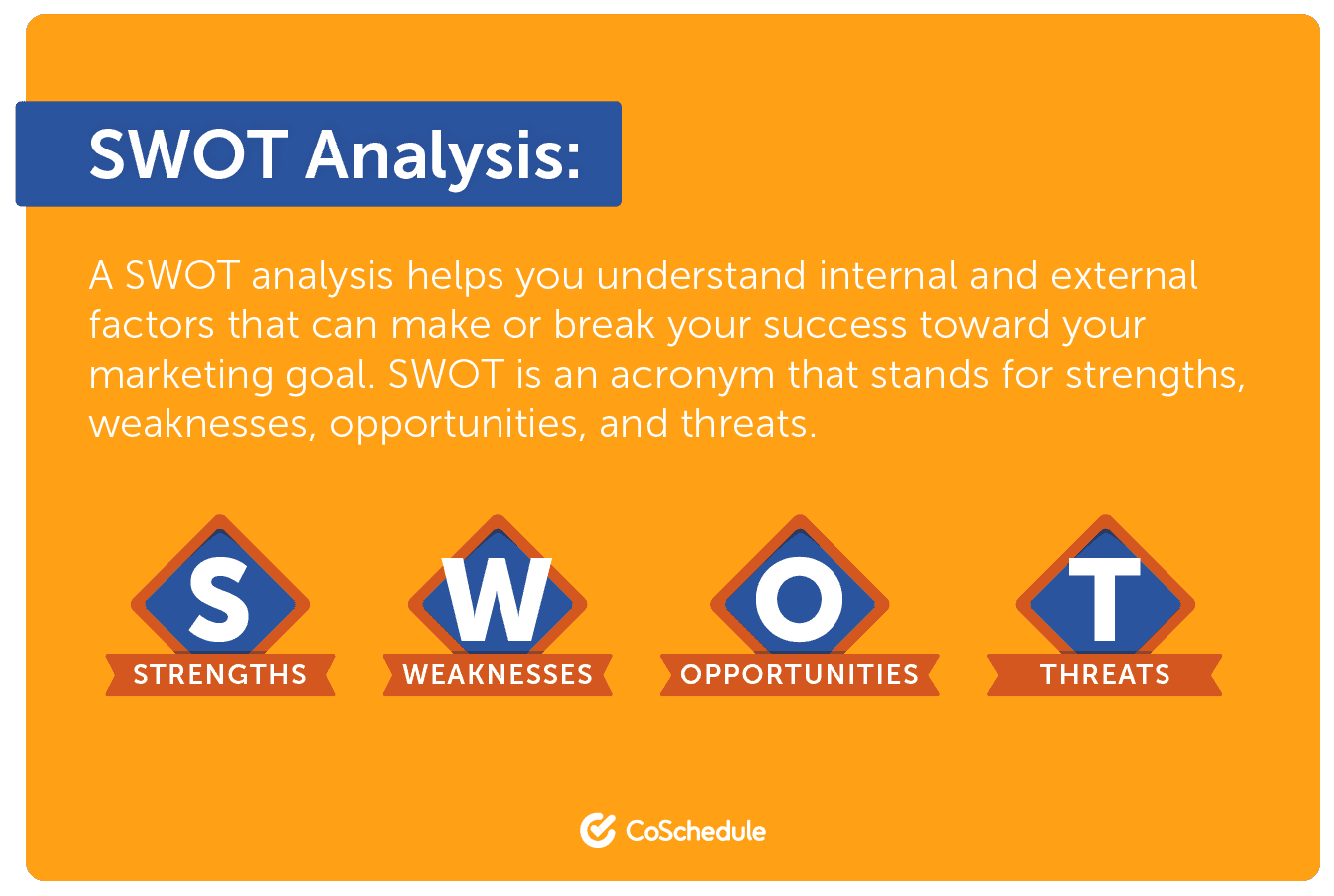
A brainchild of Albert S. Humphrey, the SWOT analysis is another grid-based marketing model. It’s used to analyze a business’s internal Strengths and Weaknesses and its external Opportunities and Threats.
The SWOT model helps businesses plan their operations with its simple yet effective analysis.
Thanks to its usefulness in helping understand how likely something can win, the SWOT analysis is also commonly used to brainstorm and evaluate marketing strategies and campaigns.
5. PR Smith’s SOSTAC® Planning System: Situation Analysis, Objectives, Strategy, Tactics, Actions, & Control
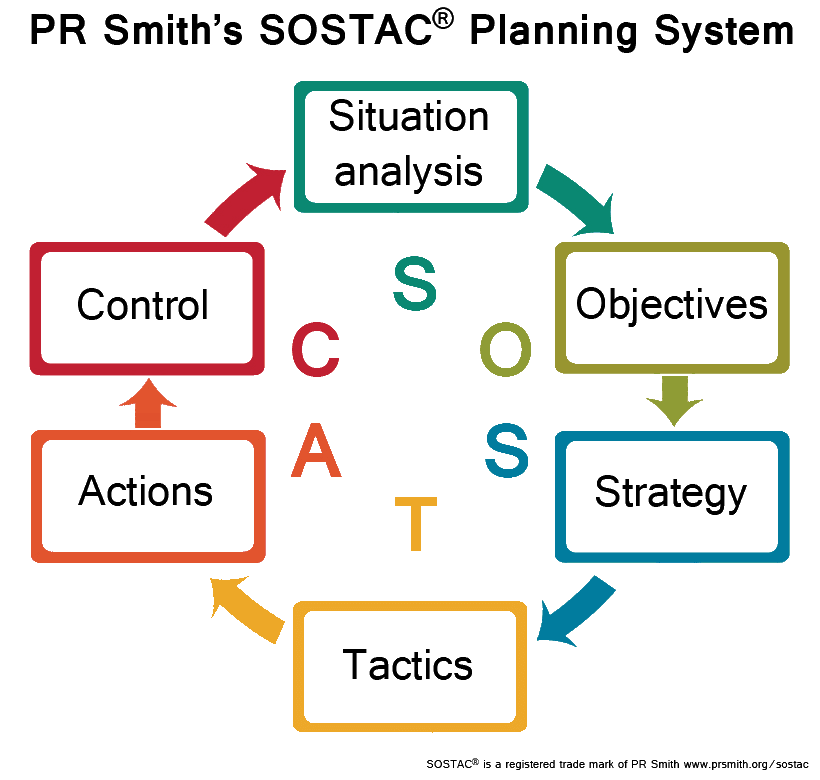
The SOSTAC planning system was developed in the 1990s and based on PR Smith’s six marketing facets:
- Situation or where a business currently is
- Objectives or where a business wants to be
- Strategy or how a business wants to get there
- Tactics or what ways a business will get there
- Action or the action steps to take to get a business where it wants to be
- Control or the evaluation after executing the strategy, answering how a business got there
Given how the SOSTAC framework helps create tactical plans, it’s not only used for business planning but also in personal life. Within marketing, individual marketing specialists can leverage it too- for example, email and social media marketers.
6. McKinsey 7S Framework: Structure, Strategy, Skills, Staff, Style, Systems, & Shared Values
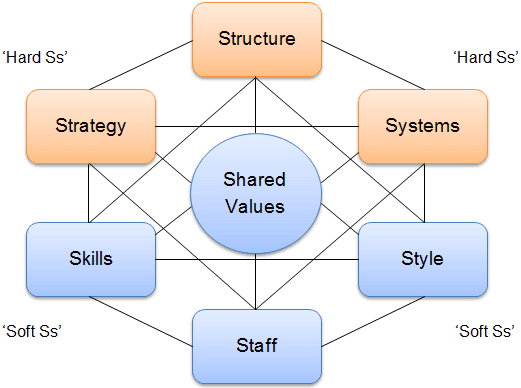
The McKinsey 7S Model is a business organizational tool developed by business consultants Robert H. Waterman, Jr. and Tom Peters.
It helps assess a company’s wellness and future odds of success based on how strong its internal structure is.
This internal structure, in turn, is determined by the following seven elements of a company — divided into hard and soft elements based on how easy to manage they are:
- Structure
- Strategy
- Systems
- Skills
- Style
- Staff
- Shared values
7. Marketing Mix (7 Ps Of Marketing): Product, Price, Place, Promotion, Packaging, Positioning, People
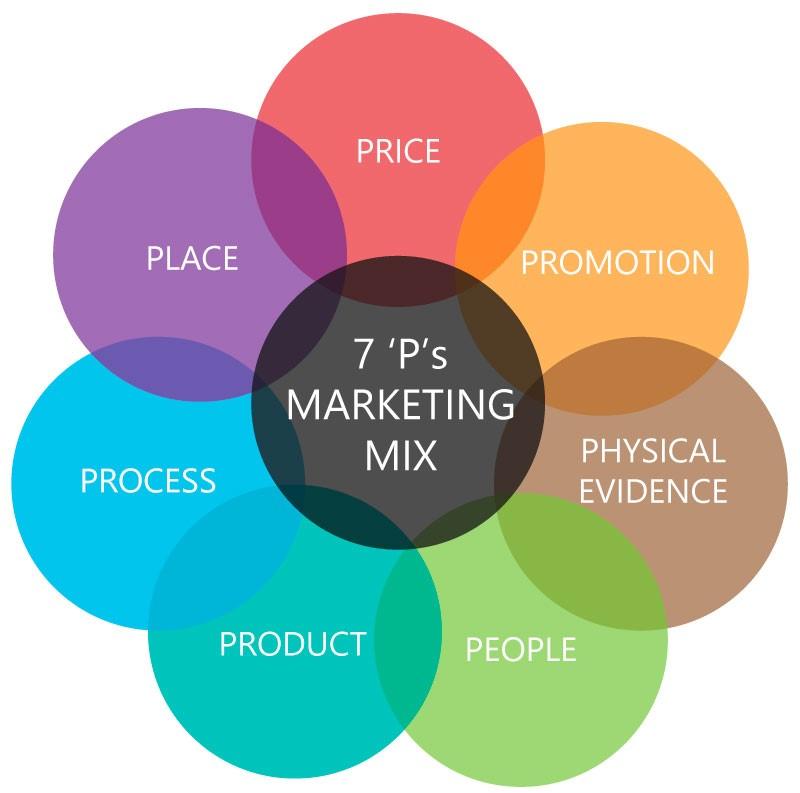
Another essential model on this list of marketing models is the ‘Ps of Marketing’ model or the marketing mix — created originally by E. Jerome McCarthy. McCarthy created the original ‘4 Ps of Marketing,’ Product, Price, Place, and Promotion.
Later, Booms and Bitner tweaked the original model to add the 3 Ps of the services aspect of a business, Participants, Physical evidence, and Processes.
Further down the line, these were updated again to give you the current mix of 7 Ps:
- Product
- Price
- Place
- Promotion
- Packaging
- Positioning
- People
This 7 Ps marketing model helps businesses identify issues that impact their products and services marketing. Since the 7 Ps change fairly quickly, it’s best to revisit them regularly to make sure you’re achieving the best results possible.
8. STP Framework: Segmentation, Targeting, & Positioning

Northwestern University’s professor Phillip Kotler devised the STP framework to help businesses identify their target market.
It’s based on three key steps:
- Segmentation– pinpoint customer segments that fit your product
- Targeting– organize and prioritize target segments
- Positioning– market your product to each specific target segment.
The model helps you examine how well your products/services fit the target market and how well you’re communicating their value to specific customer segments.
9. Brand Positioning (Perceptual) Mapping: High Quality vs. Low Quality & High Price vs. Low Price

A brand positioning map visualizes how your target customers perceive (think and feel about) your brand.
Not only does perceptual mapping help with branding, but it also helps marketers determine customers’ views of a product. As a result, the model is also commonly known as a product positioning map.
Its importance lies in the fact that it helps explain to your target audience why your offering is the best choice for them and what sets you apart. If done well, brand positioning also helps businesses justify their pricing.
10. USP: Unique Selling Proposition
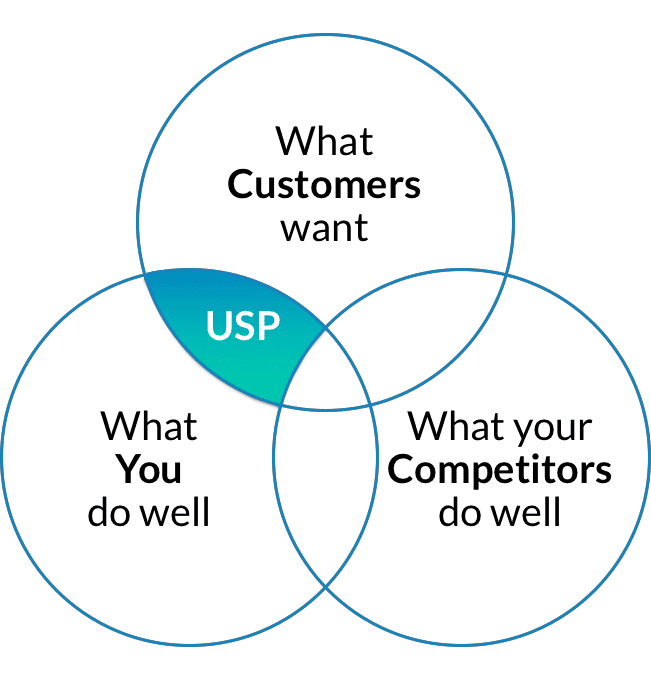
The Unique Selling Proposition (USP), also known as the Unique Value Proposition (UVP), is a distilled statement that explains your product/service’s selling point.
TV advertising pioneer Rosser Reeves coined the term, which explains why customers should buy your product/service while identifying how you’re better than the competitors.
11. AIDA Model: Awareness, Interest, Desire, & Action
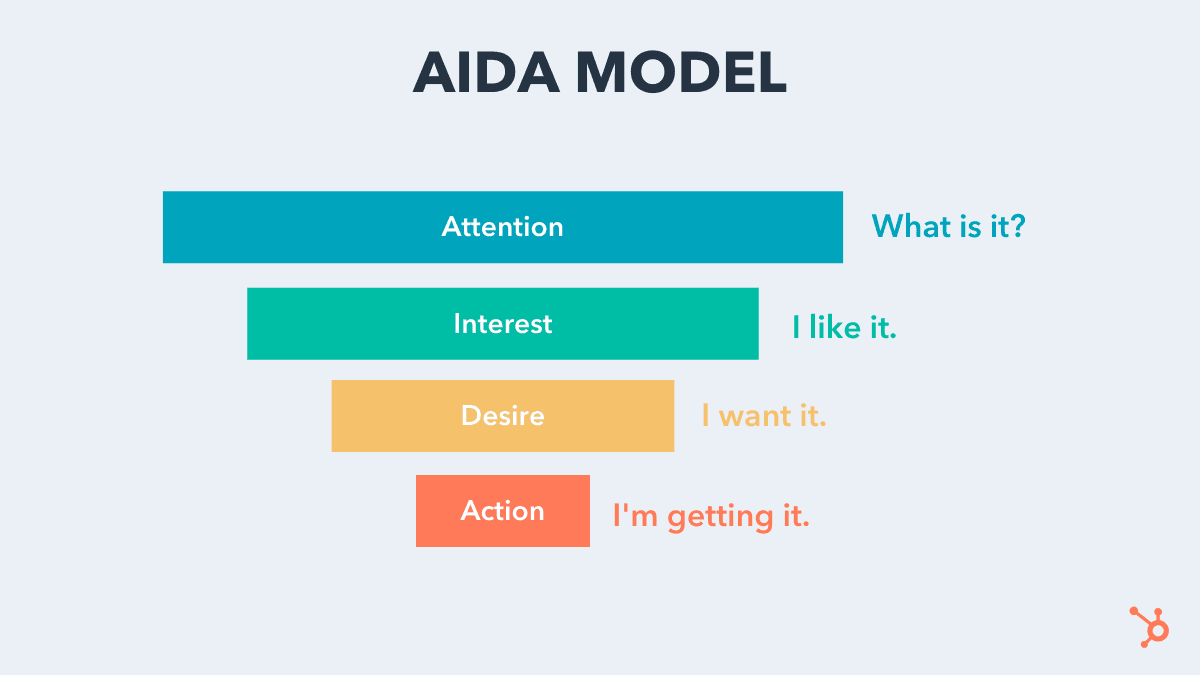
The AIDA model is a hierarchy of effects model created by American businessman, Elias St. Elmo Lewis, to explain the stages a prospect goes through during their buying process.
The model breaks down to:
- Awareness, or learning about the product, through advertising or organic marketing
- Interest, or a prospect learning about and engaging with a product or service
- Desire, or the connection a prospect starts developing with your product so that they begin to “need” it
- Action, or the time when the customer either buys from you directly or begins to interact with your business (for example, by using the freemium model)
12. Hook Model: Trigger, Action, Variable Reward, & Investment
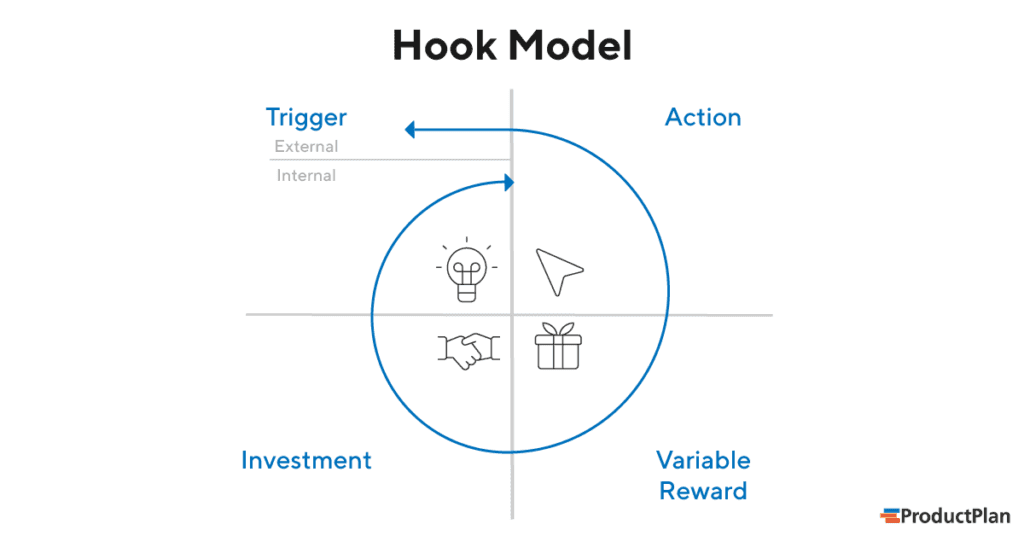
Author, entrepreneur, and behavioral economist, Nir Eyal created the Hook Model to help businesses build habit-forming products.
At the heart of this model is usability design that determines how product design encourages specific behavior in four phases:
- Trigger to get people to use the product
- Action that satisfies the trigger
- Reward — variable by nature — for the action
- Investment that gets the user to click the trigger again
13. RACE Model: Reach, Act, Convert, & Engage
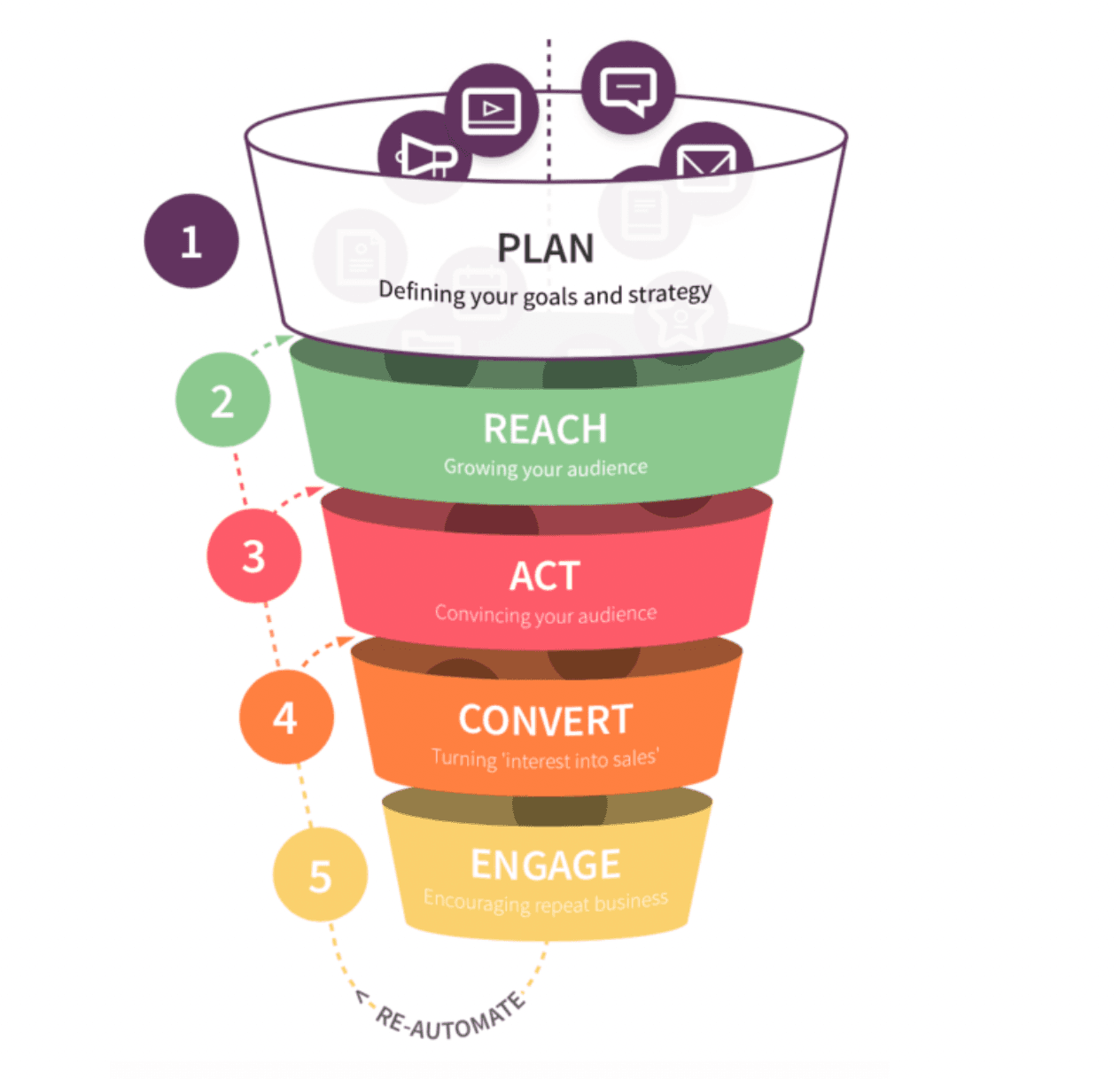
The RACE model is the brainchild of Dr. Dave Chaffey, the co-founder of Smart Insights, a digital marketing advice publication. It’s a framework for strategically planning marketing activities such as creating PR plans.
The four steps taken as part of the framework, Reach, Act, Convert, and Engage, aim to help businesses engage customers in different stages of their journey.
14. AARRR Pirate Metrics: Acquisition, Activation, Retention, Referral, & Revenue
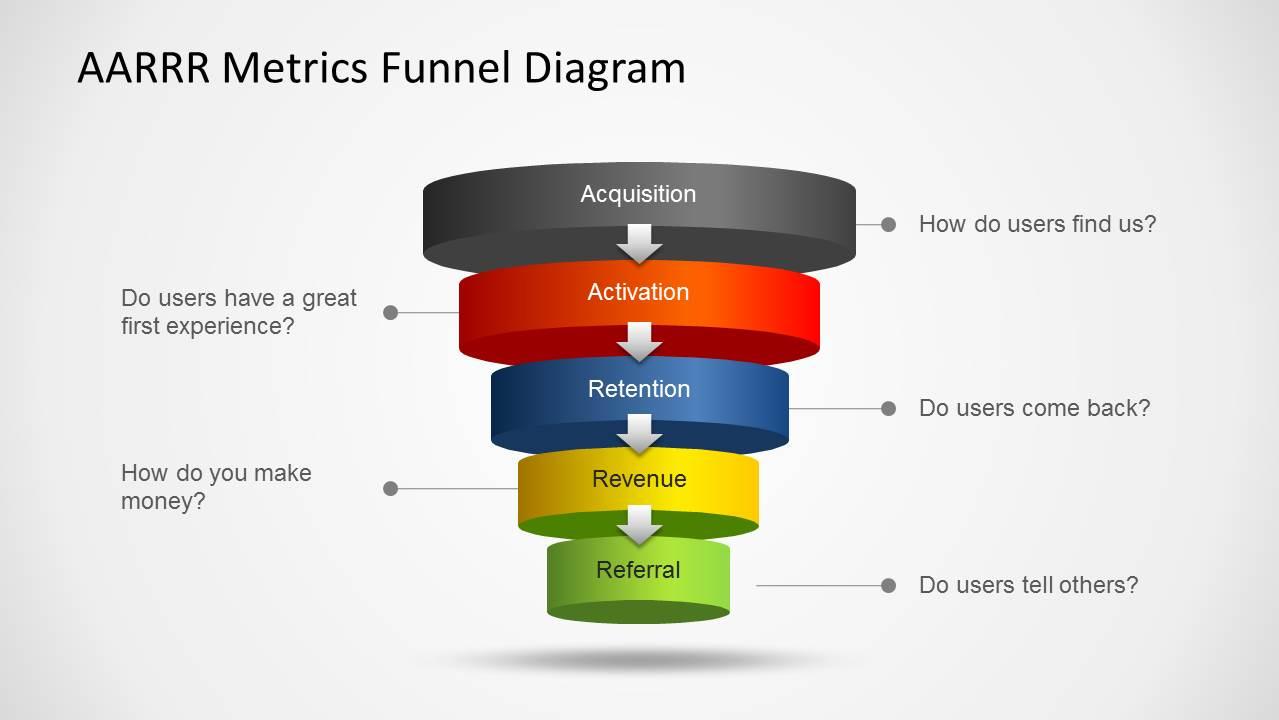
The AARRR framework comprises a set of behavioral metrics that product-led businesses should track to improve product marketing and management.
The acronym was developed by Silicon Valley investor Dave McClure, who founded 500 startups fast and sustainably.
The metrics are:
- Acquisition (or awareness) to determine how people are discovering the startup
- Activation to evaluate if people are taking the steps the company expects them to
- Retention to review if users are consistently engaging with the product
- Referral to measure if satisfied users are talking about the product
- Revenue to understand if users are willing to pay for the paid product
15. Marketing Funnel Modeling: TOFU, MOFU, BOFU
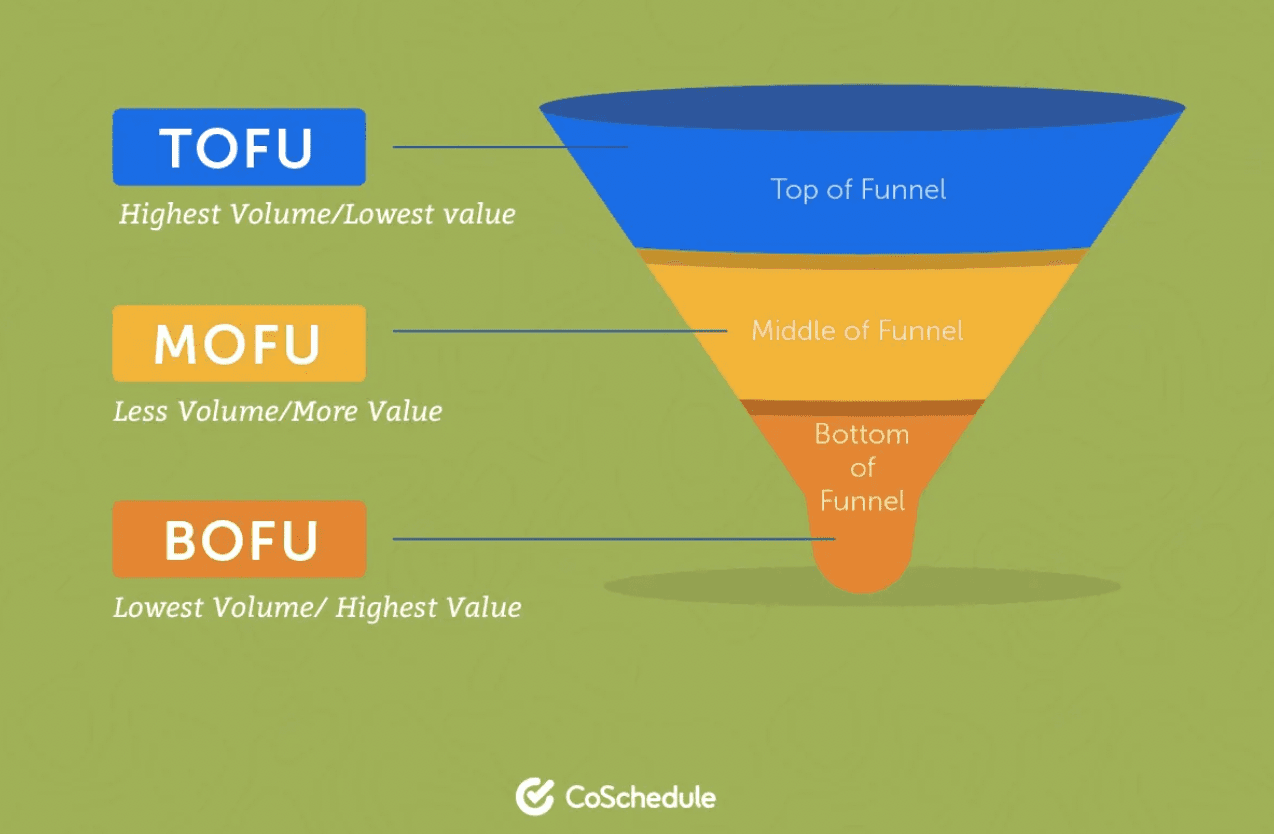
The marketing funnel visually represents how prospects move through their customer journey with your business.
The three key stages in the funnel are:
- Top of the funnel to help prospects identify their problem.
- Middle of the funnel to market problem-aware prospects about your product/service.
- Bottom of the funnel to encourage close-to-buying customers about your offer.
Use the marketing funnel model to plan your strategies to attract, engage, and convert prospects using different marketing materials.
16. BANT Framework: Budget, Authority, Need, & Timing
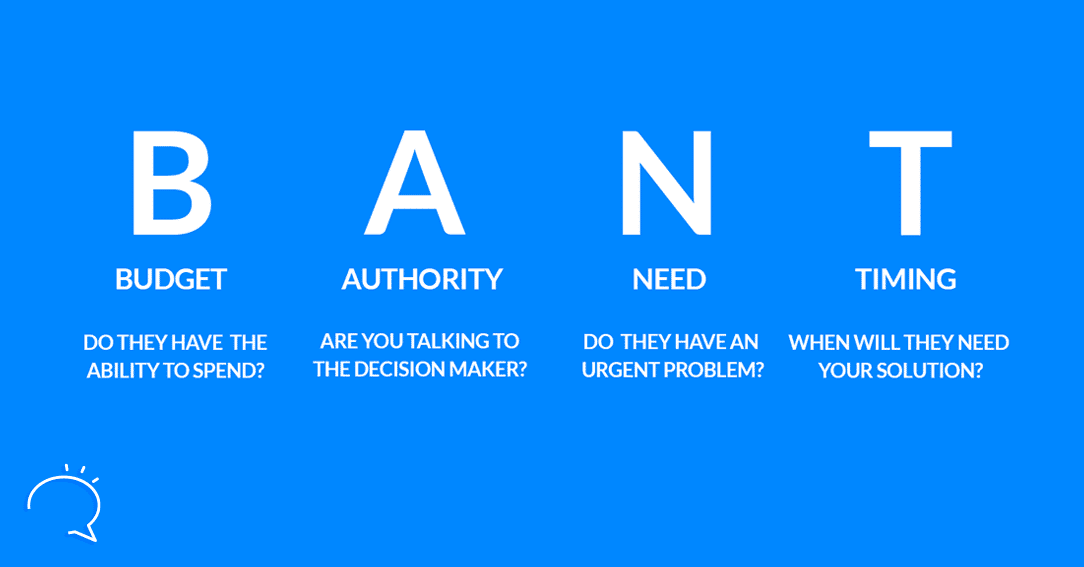
Created by IBM in the 1950s to identify opportunities, the BANT framework is a method to help businesses qualify leads (individuals interested in working with your business).
Knowing qualified leads, in turn, helps you prioritize the right leads. Here’s how the framework helps with lead qualification:
- Budget. Does the business have the budget to work with you/buy from you?
- Authority. Is the person you’re talking to have the authority to make the buying decision or, at least, influence that decision?
- Need. What business struggles can you help reduce?
- Timing. When is the prospective business looking to purchase?
17. Growth-Share Matrix: Stars, Cash Cows, Dogs, Question Marks

The growth-share matrix was created by BCG employees and popularized by the company’s founder, Bruce D. Henderson, in an essay titled The Product Portfolio.
It’s a portfolio management framework that assists businesses in deciding which of their different businesses or products to prioritize.
It helps businesses by encouraging them to review various factors such as industry growth and relative market share to evaluate business/product growth potential.
18. Product Lifecycle Theory: Introduction, Growth, Maturity, Decline, & Extension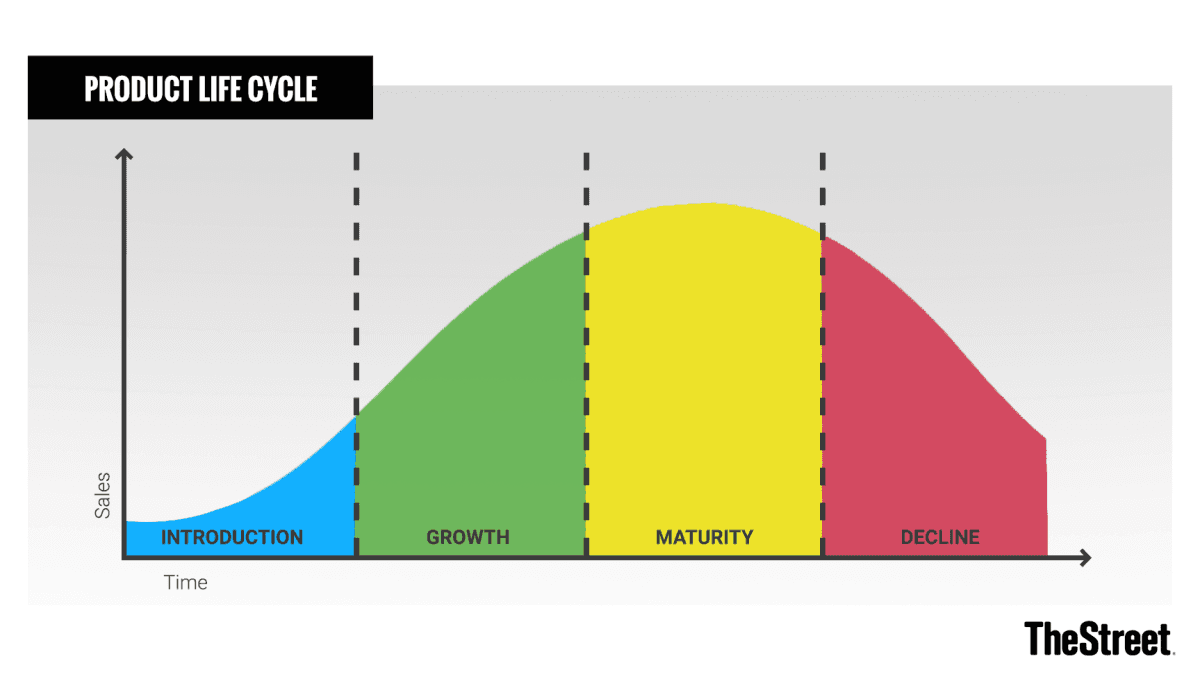
The Product Lifecycle Theory is a set of strategies used throughout a product lifecycle (from the time it’s introduced to its audience to the time it’s removed from shelves/retired).
This lifecycle breaks down into five main stages: Introduction, Growth, Maturity, Decline, and Extension.
By helping you manage strategies throughout the product lifecycle, this framework enables you to make informed decisions and increase ROI and profitability throughout the lifecycle. It also helps you maintain and improve customer/user loyalty, business reputation, and product appeal.
19. Innovation Adoption Lifecycle: Innovators, Early Adopters, Early Majority, Late Majority, & Laggards
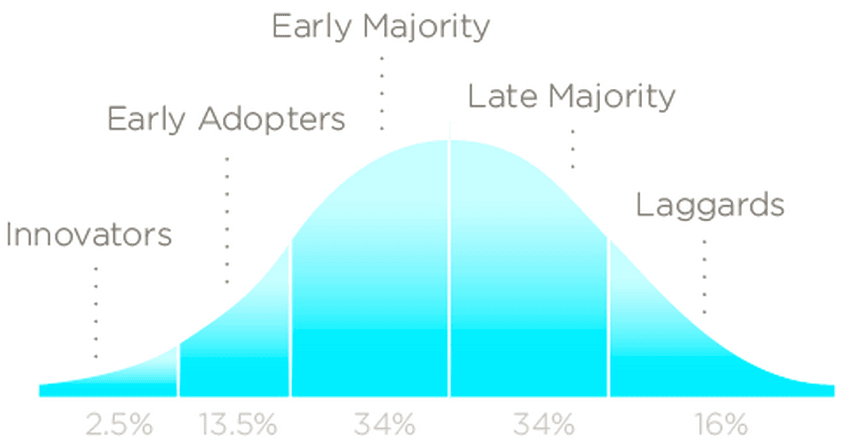
This model is a bell curve model that explains how different categories of people react to and adopt new ideas and products.
It helps businesses understand how to get an idea/product to spread from innovators to early adopters, to early majority, late majority, and laggards. Knowing who is adopting your product helps you plan for their motivations accordingly.
20. Maslow’s Hierarchy Of Needs: Physiological, Safety, Belonging, Esteem, Self-Actualization
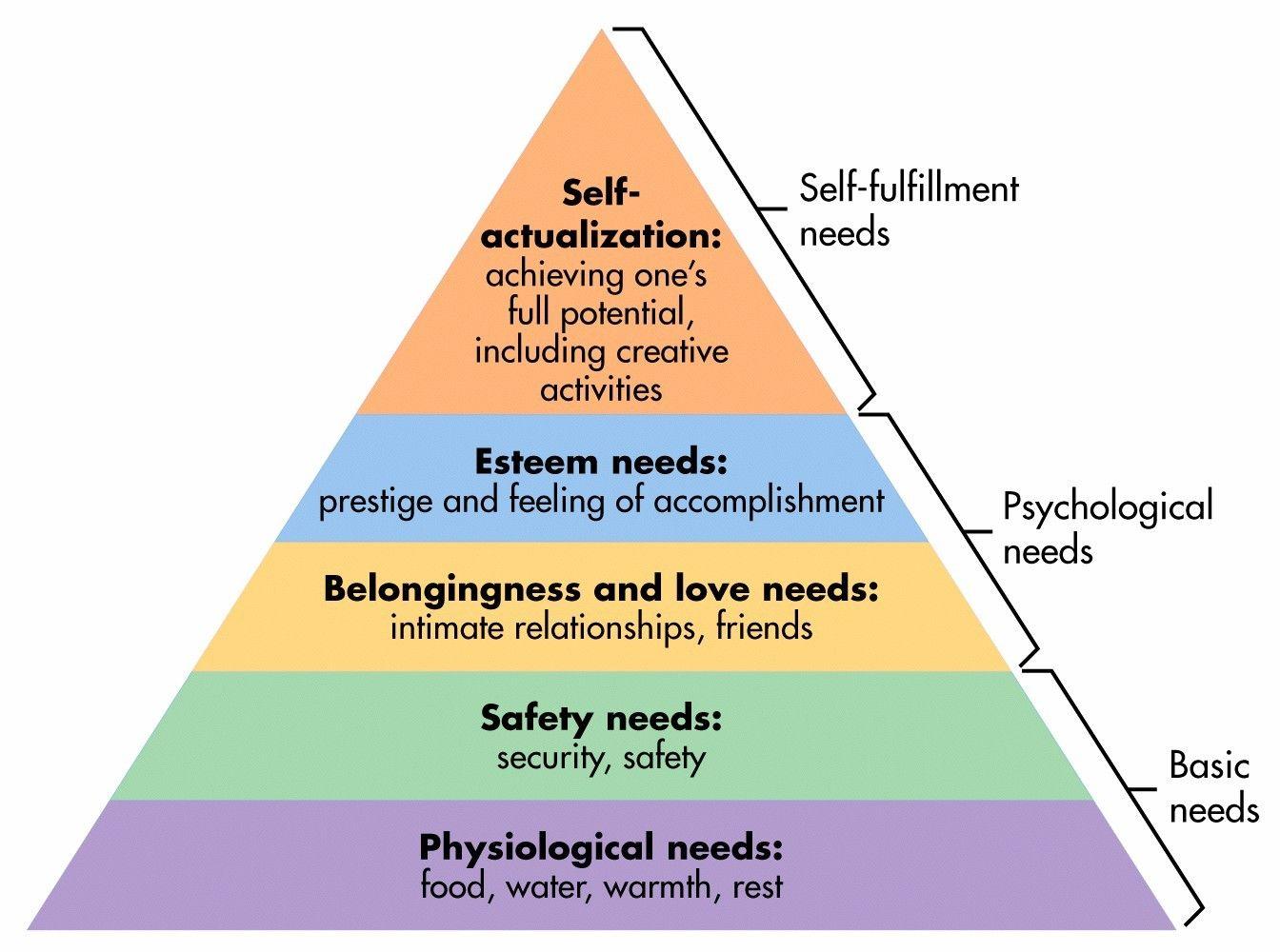
Lastly, Abraham Maslow created this marketing model to explain the five sets of human needs that need to be fulfilled in a particular order.
These needs are:
- Physiological (food and clothing)
- Safety (job security, for example)
- Love and belonging (strong networks, friendships, and social presence, for example)
- Esteem (feeling of accomplishment, for example)
- Self-actualization (achieving full potential, for instance, through creative pursuits)
The theory is important as it helps businesses uncover customers’ motivation to create emotionally relevant marketing that speaks to their target audience.
21. Sinek’s Golden Circle: Why, How, What
Coined by Simon Sinek, the Golden Circle is a business development theory focused on communicating the “why” to consumers. As Sinek said, “People don’t buy what you do, they buy why you do it.”
His theory is broken into three concentric circles:
- Why refers to your purpose.
- How refers to your process.
- What refers to your product.
Based on neuroscience, answering the question “Why are you in this business?” taps into interest and appeals to customers in a more meaningful way.
22. GOST Framework: Goals, Objectives, Strategies, Tactics

Developed by Peter Gollwitzer, the GOST Framework distinguishes high level and low level details to turn goals into actionable insights. Critical for strategic planning, the framework enables accountability and coordinates purposeful actions.
GOST breaks down into the following:
- Goals: A broad, finite outcome
- Objectives: A specific description of the desired outcome
- Strategy: A broad plan of action
- Tactics: The smaller, specific actions taken to achieve a goal
23. AMEC Integrated Evaluation Framework: Inputs, Activities, Outputs, Out-takes, Outcomes, & Organizational Impact
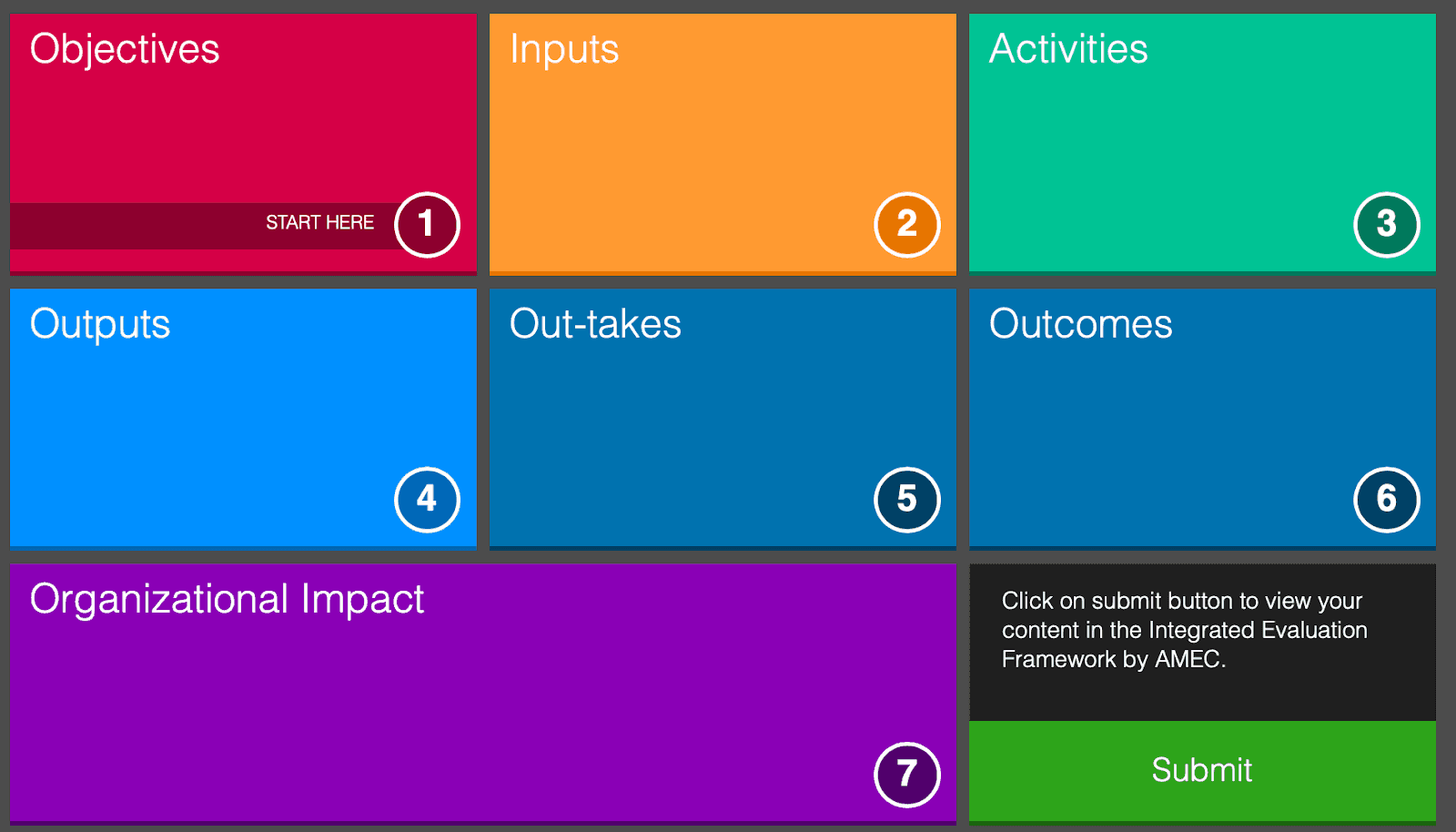
Developed by AMEC (International Association for the Measurement and Evaluation of Communication), the Integrated Evaluation Framework (IEF) guides practitioners through planning initiatives, strategy implementation, and outcome evaluation.
The framework breaks down into seven tiles:
- Objectives: Define organizational objectives. Include a measure of impact.
- Inputs: Determine the target audience, resources required, and budget
- Activities: Outline what activities have been carried out (i.e. testing, research, content production)
- Outputs: A quantitative and qualitative measure of the content produced
- Out-takes: Gauge the response of the target audience
- Outcomes: Measure the effect of target audience communications – Has understanding increased? Have attitudes changed? Has trust increased?
- Impact: Lastly, evaluate the impact of the organizational objectives
Together, the seven tiles operationalize basic marketing principles to tell a meaningful measurement story.
24. PESO Model: Paid, Earned, Shared, Owned
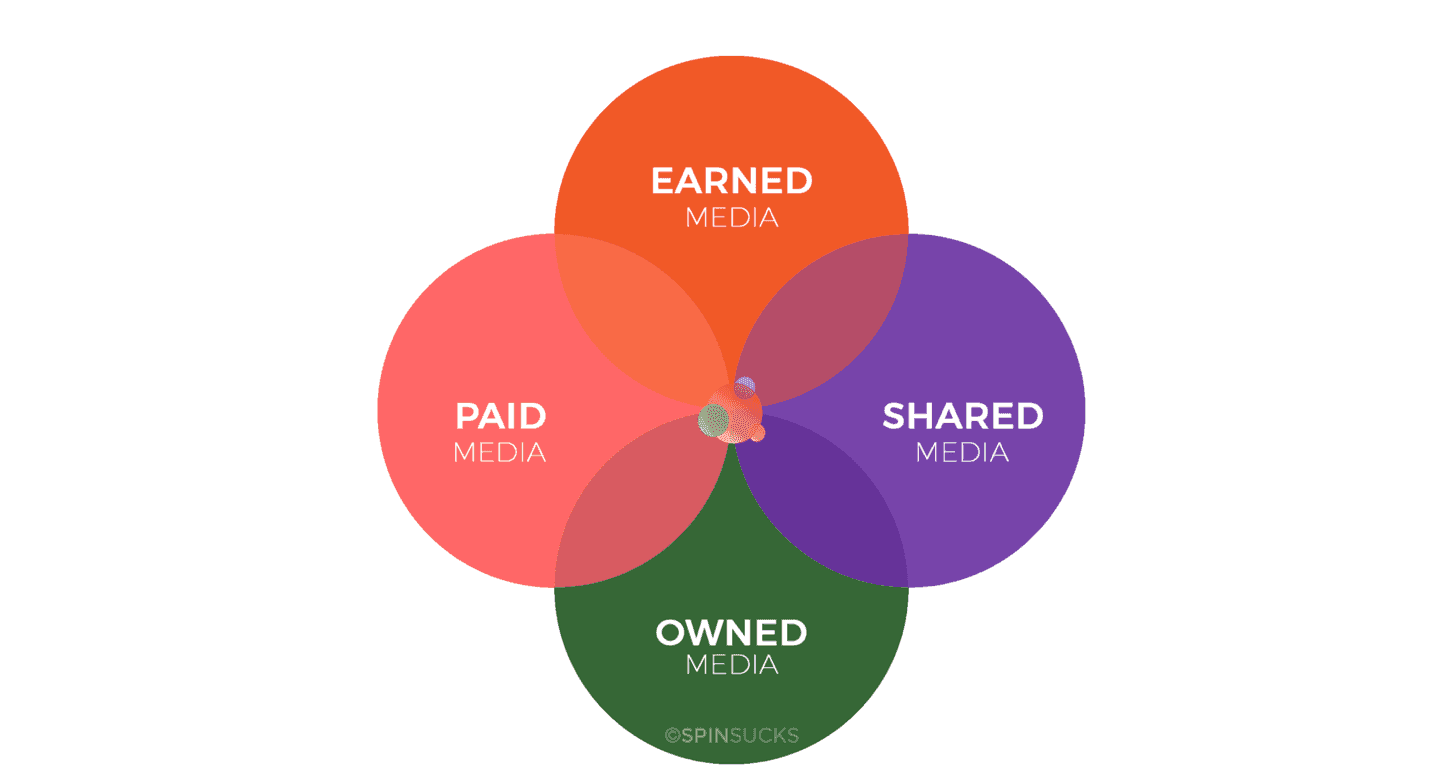
Designed in 2014, the PESO model merges four media types – paid, earned, shared, and owned – into an integrated communications system. It uses various marketing techniques to optimize content in every sphere, building a strong online presence.
The model breaks down to:
- Paid Media, any marketing effort involving paid placement
- Earned Media, engagement generated through unpaid activities (product reviews, social media mentions, media coverage)
- Shared Media, content shared across third party platforms
- Owned Media, content owned and controlled by a brand (i.e., a website or blog).
Adopting a PESO model, as part of an integrated strategy, leverages content investment and expands reach.
25. Diffusion of Innovation: Product Momentum & Diffusion
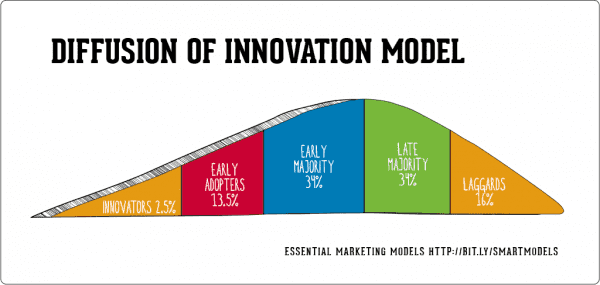
The Diffusion of Innovation model illustrates how buyers adopt a product over time. In general, consumers can be separated into five categories:
- Innovators: A small group of individuals open to exploring new technologies and products
- Early Adopters: The opinion leaders who are willing to share testimonials
- Early Majority: The individuals who are influenced and follow the early adopters
- Late Majority: Skeptics not keen on change, but will adopt a product if there is a strong feeling of missing out
- Laggards: Individuals who will only adopt new products when there are no alternatives
26. DRIP: Differentiate, Reinforce, Inform, & Persuade
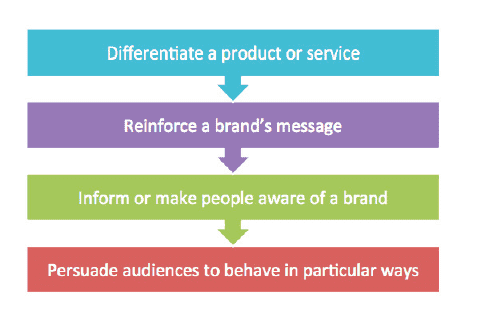
The DRIP model – Differentiate, Reinforce, Inform, and Persuade – is a communication strategy in which a constant “drip” of content is delivered to customers over time. The model helps maintain contact with current and prospective customers while announcing available products and services.
The model breaks down to:
- Differentiate a product or service from competitors
- Reinforce brand messaging
- Inform individuals of a brand
- Persuade consumers to complete a desired action

